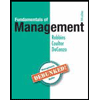Using the attached, Suppose an organisation that manufactures personal protective equipment for the South African market is located in China. This South African organisation provides personal protective equipment as an additional product offering; however, it is not core to its operations. Using the practical context provided and the scenario attached, illustrate a supply chain depicting the movement of these goods. (using a diagram) Please use a illustration of a generic supply chain provided to you as a starting point. Not to replicate ageneric supply chain. Provide evidence of application to the scenario provided.
Using the attached, Suppose an organisation that manufactures personal protective equipment for the South African market is located in China. This South African organisation provides personal protective equipment as an additional product offering; however, it is not core to its operations. Using the practical context provided and the scenario attached, illustrate a supply chain depicting the movement of these goods. (using a diagram) Please use a illustration of a generic supply chain provided to you as a starting point. Not to replicate ageneric supply chain. Provide evidence of application to the scenario provided.
Chapter1: Taking Risks And Making Profits Within The Dynamic Business Environment
Section: Chapter Questions
Problem 1CE
Related questions
Question
100%
Using the attached, Suppose an organisation that manufactures personal protective equipment for the South African market is located in China. This South African organisation provides personal protective equipment as an additional product offering; however, it is not core to its operations.
Using the practical context provided and the scenario attached, illustrate a supply chain depicting the movement of these goods. (using a diagram)
Please use a illustration of a generic supply chain provided to you as a starting point. Not to replicate ageneric supply chain. Provide evidence of application to the scenario provided.

Transcribed Image Text:Global supply chain crisis caused by Covid-19 threatens Christmas joy around the
world
As Covid-19 threatens to steal Christmas again with the emergence of the Omicron
variant, those celebrating should also expect higher prices and fewer choices due to the
global supply chain crisis.
According to the South China Morning Post, the global supply chain has taken massive
strain since the start of the pandemic, which continues to affect the flow of goods from
China and has led to rising shipment costs.
Despite the increase in retail figures, a shortage of various items such as chemicals,
microchips and paint needed to manufacture and produce finished goods has increased
production costs.
"Shipments were delayed by a month and prices are higher than before," said We
Zhishan, a store manager at Yiwu International Trade Market.
"Containers are up to US$630 more expensive, depending on regions and countries," he
said.
A report by the New York Times explained that scarcity has caused the spike in prices,
which began when manufacturing companies were forced to shut down or reduce
production due to strict lockdown measures.
"In response, shipping companies cut their schedules in anticipation of a drop in demand
for moving goods around the world," read the report.
Meanwhile, people around the world prepared for the "new normal" by creating home
offices and home gyms and purchasing items such as printers and gaming consoles, as
well as paint and machinery for DIY projects.
As many factories slowly reopened and began ramping up their production, the shortage
in items needed to produce these goods created a backlog as demand continued to rise.
At the same time, those products which had been finished and sent for delivery to their
respective countries and regions could not be delivered due to a shortage of containers,
and they piled up in warehouses across Asia. The delivery of masks and protective gear
also became a priority, occupying the space in containers that made their way to every
corner of the world.
The ripple effect saw many companies placing larger orders due to shortages, resulting in one of
the biggest traffic jams on record.
Expert Solution
This question has been solved!
Explore an expertly crafted, step-by-step solution for a thorough understanding of key concepts.
Step by step
Solved in 4 steps with 1 images

Recommended textbooks for you

Understanding Business
Management
ISBN:
9781259929434
Author:
William Nickels
Publisher:
McGraw-Hill Education

Management (14th Edition)
Management
ISBN:
9780134527604
Author:
Stephen P. Robbins, Mary A. Coulter
Publisher:
PEARSON

Spreadsheet Modeling & Decision Analysis: A Pract…
Management
ISBN:
9781305947412
Author:
Cliff Ragsdale
Publisher:
Cengage Learning

Understanding Business
Management
ISBN:
9781259929434
Author:
William Nickels
Publisher:
McGraw-Hill Education

Management (14th Edition)
Management
ISBN:
9780134527604
Author:
Stephen P. Robbins, Mary A. Coulter
Publisher:
PEARSON

Spreadsheet Modeling & Decision Analysis: A Pract…
Management
ISBN:
9781305947412
Author:
Cliff Ragsdale
Publisher:
Cengage Learning

Management Information Systems: Managing The Digi…
Management
ISBN:
9780135191798
Author:
Kenneth C. Laudon, Jane P. Laudon
Publisher:
PEARSON

Business Essentials (12th Edition) (What's New in…
Management
ISBN:
9780134728391
Author:
Ronald J. Ebert, Ricky W. Griffin
Publisher:
PEARSON

Fundamentals of Management (10th Edition)
Management
ISBN:
9780134237473
Author:
Stephen P. Robbins, Mary A. Coulter, David A. De Cenzo
Publisher:
PEARSON